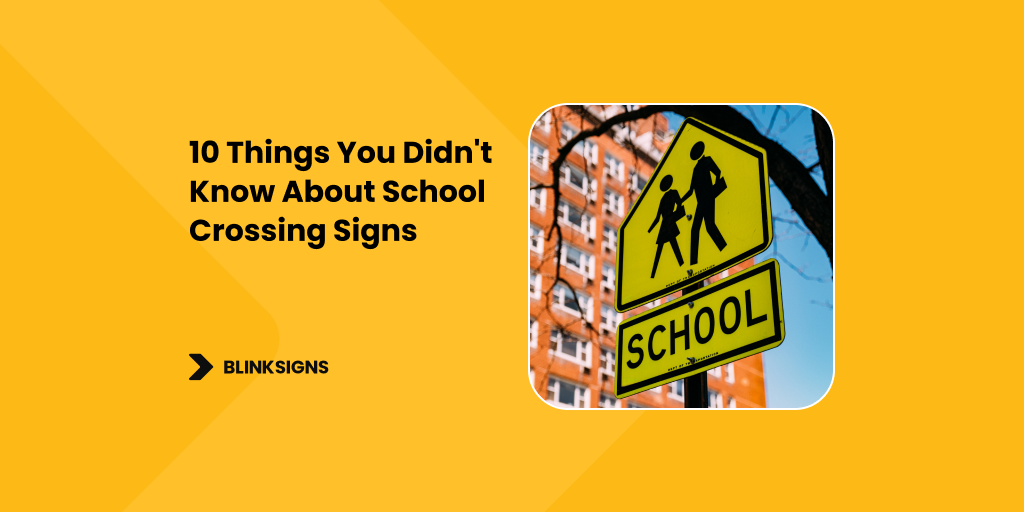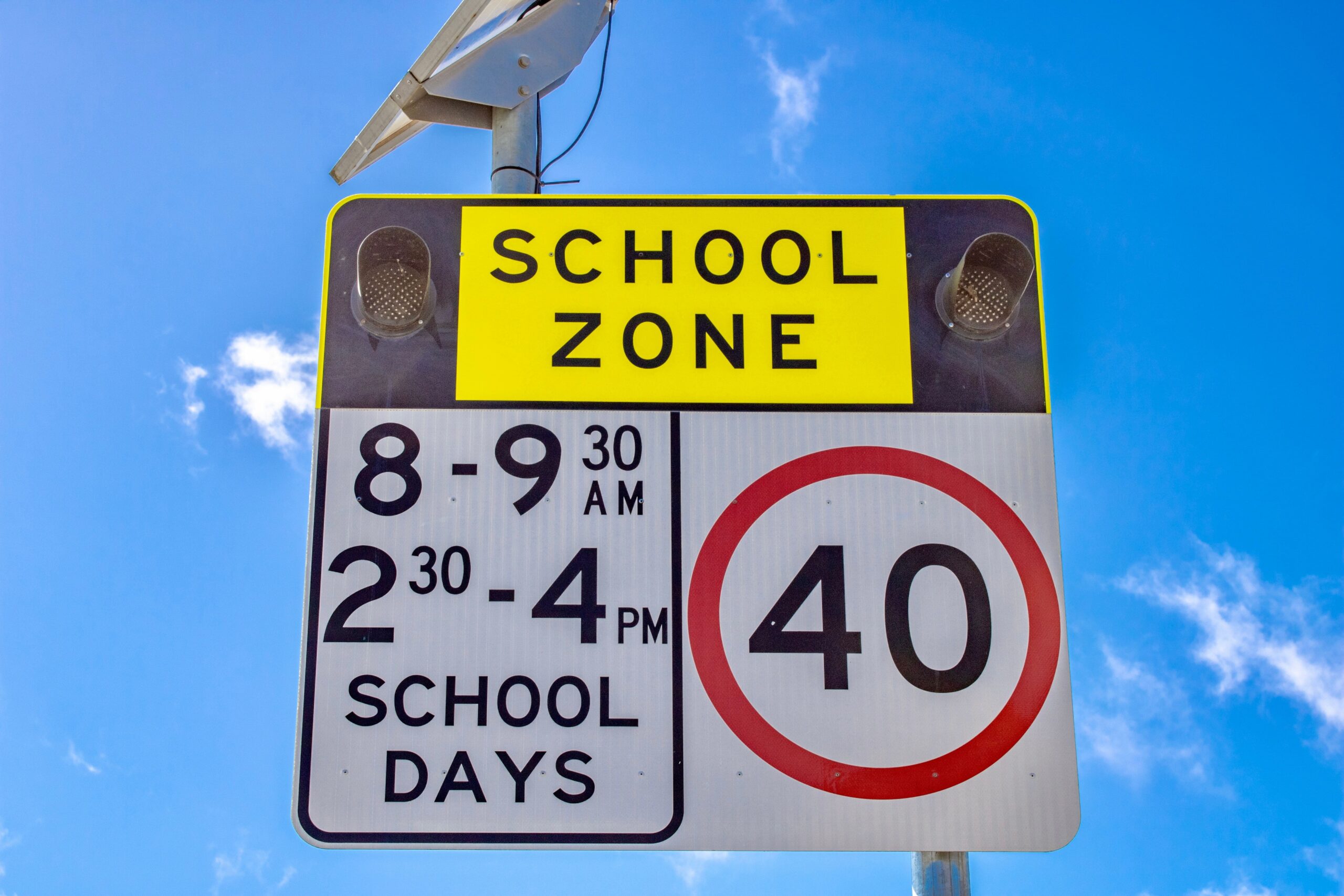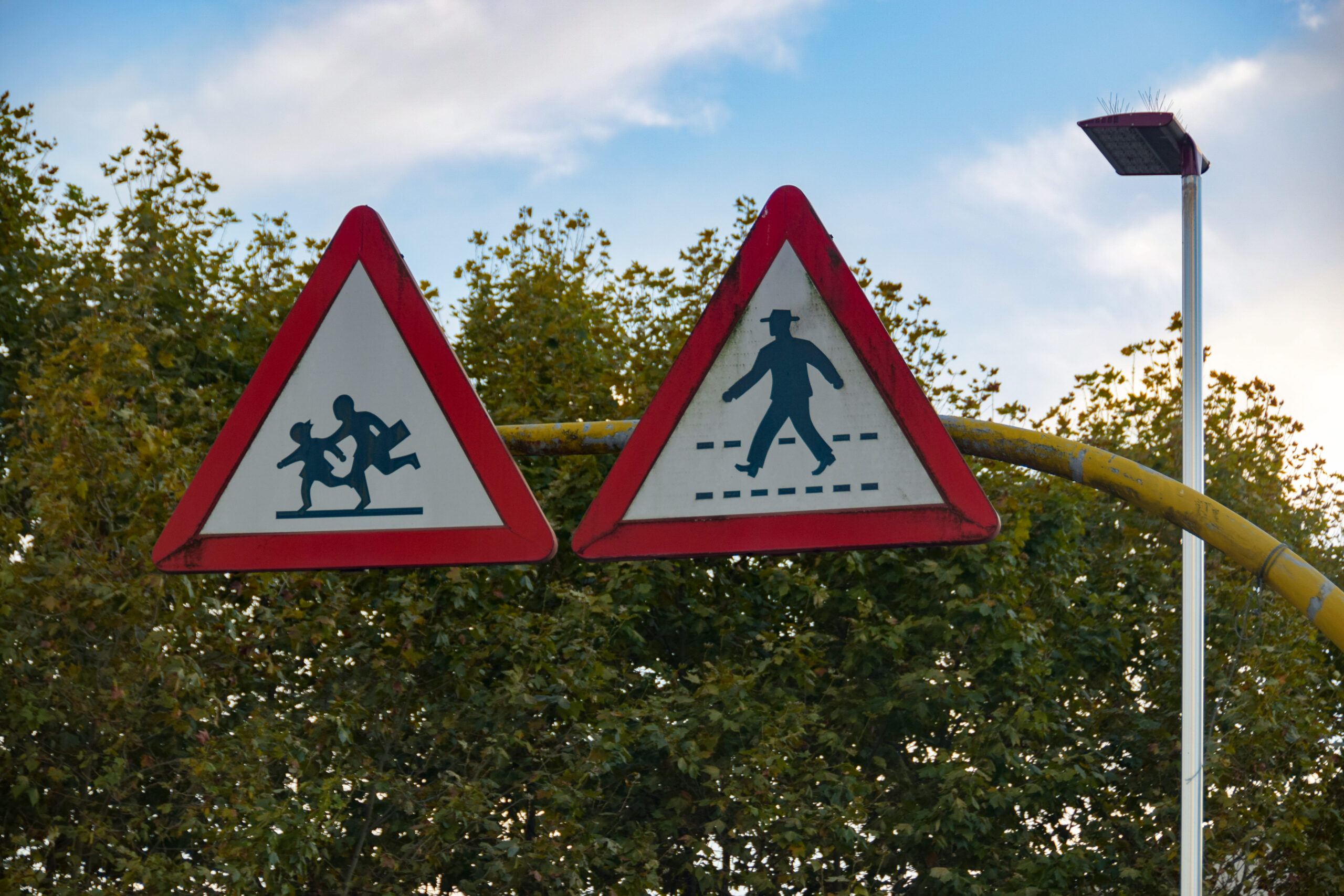
10 Things You Didn’t Know About School Crossing Signs
School crossing signs, while easily overlooked, have a fascinating narrative with elements spanning from their origin to their evolving design, current use, and misinterpretations.
Their vibrant yellow-green hue indicates caution, designed to protect children, but the regional variations, such as Japan’s animated characters or Australia’s incorporated kangaroo imagery, would amaze you.
Laws dictate the signs’ placement, visibility, and even the penalties for violations. They’ve gone from rudimentary text to flashy digital displays, with the aim of keeping our children safe.
As you explore further, each additional detail about these signs might make you see your morning commute in a brand-new light.
The Origin of School Crossing Signs

School sign
Let’s explore the history and unravel the origin of school crossing signs. Within the historical context, these signs emerged as an essential public awareness tool to enhance children’s safety.
The design evolution of school crossing signs reflects cultural influences from different periods and regions. Initially, they were simple, merely indicating a school zone.
However, as safety statistics highlighted the dire need for clearer signage, the design strengthened to incorporate universally recognized symbols.
A study of these signs offers an insightful gaze into societal attitudes towards child safety. Over the decades, the public’s understanding of these signs has grown, contributing to safer roads around schools.
The journey of school crossing signs is a reflection of humanity’s relentless pursuit of safety.
1. The Universal Symbol Design
Having followed the historical journey of school crossing signs, we now turn our attention to the development of the universal symbol design. This design is a representation of the power of visual communication and its cultural significance.
With the universal design:
- It’s easily understood, proving its communication effectiveness.
- The evolution of iconography is fascinating, moving from complex to simple.
- It adheres to global standards, ensuring uniformity worldwide.
- Its simplicity embodies the cultural significance of protecting children.
This design isn’t just an instruction; it’s a symbol that transcends language and cultural barriers.
It’s a beacon of safety, a reflection of our collective effort to protect the youngest members of society.
The universal sign for school crossing is a true icon of global unity.
2. Specific Color Significance
Delving into the specific color significance, it is essential to note that the vibrant yellow-green hue of school crossing signs plays a pivotal role in their effectiveness. When considering yellow, which means psychology, it is associated with caution and attention, making it perfect for these signs. The bright hue increases sign visibility, catching the eye even from a distance, which carries significant safety implications in busy traffic areas near schools.
Here’s a brief look at the color’s significance:
| Aspect | Significance |
| Yellow Meaning | Caution, Attention |
| Sign Visibility | High because of bright hue |
| Color Psychology | Draws attention, induces caution |
| Safety Implications | Enhances pedestrian safety |
| Design Standards | Follows MUTCD guidelines |
These design standards guarantee that the color’s effectiveness isn’t compromised, maintaining our focus on safety.
3. Variations Around the World

School Zone sign
Curiously, school crossing signs aren’t uniform across the globe; they exhibit a variety of designs and symbols based on each region’s cultural context and traffic regulations. These design variations reflect cultural adaptations, regulatory differences, and technological advancements unique to each area.
In Japan, signs often feature an animated character, showcasing local enforcement’s approach to making safety engaging for children.
Australia’s signs incorporate kangaroos, demonstrating a cultural adaptation to local wildlife.
In the United States, a combination of text and symbol is commonly used, reflecting regulatory differences.
With technological advancements, some European countries use electronic signs that light up during school hours, enhancing visibility and safety.
This fascinating diversity highlights the essential role of school crossing signs in our communities.
4. Laws Governing School Crossing Signs
Let’s explore the laws that govern the use and placement of school crossing signs, as these regulations play an important role in maintaining safety in our school zones.
School zone regulations and pedestrian safety laws dictate specific traffic control measures, including the positioning of these signs.
According to sign placement guidelines, they should be clearly visible to approaching drivers and placed at a height that doesn’t obstruct pedestrians. These laws protect children’s safety when they’re crossing streets to and from school.
Enforcement procedures play a crucial role in promoting adherence to these rules. Violations can lead to hefty fines or even imprisonment.
5. The Role of School Crossing Guards

The Role of School Crossing Guards
Playing a pivotal role in school zone safety, school crossing guards are tasked with the essential responsibility of ensuring children navigate across streets safely.
They undergo rigorous safety training and are deeply involved in the community, fostering child awareness about road safety. Effective traffic management is another key aspect of crossing guard duties.
Here’s a snapshot of their daily routine:
- Managing traffic flow during school hours ensures safe passage for children.
- Providing safety training and guidance to students about road safety rules.
- Actively participating in community programs to increase child awareness about street crossing.
- Coordinating with local authorities for better traffic management around school premises.
Their dedication and commitment to safety make crossing guards indispensable to our community.
6. Evolution of the School Crossing Sign

School warning sign
Tracing the history of the school crossing sign reveals an interesting evolution in design and usage, reflecting societal advancements in prioritizing child safety.
Initially, sign designs were rudimentary, often just a simple ‘School’ text. As safety measures improved, the signs developed into a recognizable shape, with two children walking.
Traffic regulations soon necessitated these signs in every school zone, leading to widespread community involvement. We saw parents and local businesses sponsoring signs, elevating the importance of child safety.
Technological advancements further shaped the evolution, introducing flashing lights and digital displays.
This progression not only underscores our commitment to child protection, but also reflects how we’ve leveraged technology and regulations for safer communities.
7. The Science Behind Visibility
Delving into the science of visibility, we uncover the vital factors that influence the effectiveness of school crossing signs. Visibility factors, such as light conditions and distance, play a significant role in pedestrian safety.
Here are some key elements that affect visibility:
- Sign placement: Strategic location is essential. Signs positioned too high or too low can be less effective.
- Reflective materials: These enhance visibility, especially at night or during adverse weather conditions.
- Weather impact: Heavy rain, snow, or fog can reduce visibility. Regular maintenance guarantees signs stay clear.
- Pedestrian safety: Ultimately, the primary goal is safety. Improved visibility leads to increased awareness and safer crossings for students.
Thus, the science behind visibility is a mix of careful planning, right materials, and continuous upkeep.
8. Unique Crossing Sign Examples
Often, we come across some truly unique and creative school crossing signs that stand out from the rest.
These aren’t just signs, but creative signage solutions that combine innovation with safety. One example of this is the innovative pedestrian designs we’ve seen in some communities, where interactive technology is integrated into the signs.
It’s a trend that’s taking off, with more communities adopting this technology integration approach.
These signs often tie into larger safety awareness campaigns, promoting caution and care around our schools.
Essential to this process is community engagement strategies, as these signs are most effective when the entire community is invested in their success.
These unique signs are just one way we’re making roads safer for our children.
9. Misinterpretations and Misuses
Despite the creativity and innovation in school crossing signs, there are instances of misinterpretations and misuses that we need to address.
Whether it’s because of misleading interpretations, cultural differences, or design flaws, these issues can lead to significant safety concerns.
Misleading interpretations: Some people may not understand the purpose of the signs, leading to dangerous situations.
Cultural differences: Signs mightn’t be universally understood due to varying cultural contexts.
Design flaws: If a sign isn’t clear or visible enough, it won’t serve its intended purpose.
Safety concerns: Misinterpretation or misuse of signs can jeopardize the safety of school children.
To address these issues, we must launch awareness campaigns that educate the public about the importance and correct interpretation of school crossing signs.
10. The Future of School Crossing Signs

The Future of School Crossing Signs
Looking ahead, we believe that the future of school crossing signs holds promising advancements in both design and technology. We’re excited about the potential of smart technology in enhancing pedestrian safety.
It’s not hard to imagine signs that interact with drivers, alerting them of a school zone even before they see it.
Signage innovation will play a key role, with signs adopting future design elements to be more visible and effective. At Blinksigns, we’re anticipating signs that can adjust their visibility based on weather conditions, time of day, or traffic flow.
Moreover, we see a growing trend of community involvement in deciding where these signs are placed. After all, who knows the dangers of a local area better than its residents?
The future of school crossing signs is indeed looking bright.
Conclusion
So, there you have it, folks!
We’ve journeyed through the intriguing world of school crossing signs together. Isn’t it amazing how these everyday symbols carry such weight and significance?
They’re more than just signs; they’re guardians of our children’s safety. It’s fascinating, isn’t it?
So next time you spot one, take a moment to appreciate the thought, science, and history behind it. Who knew school crossing signs could be so interesting?
Let’s keep exploring the signs all around us!